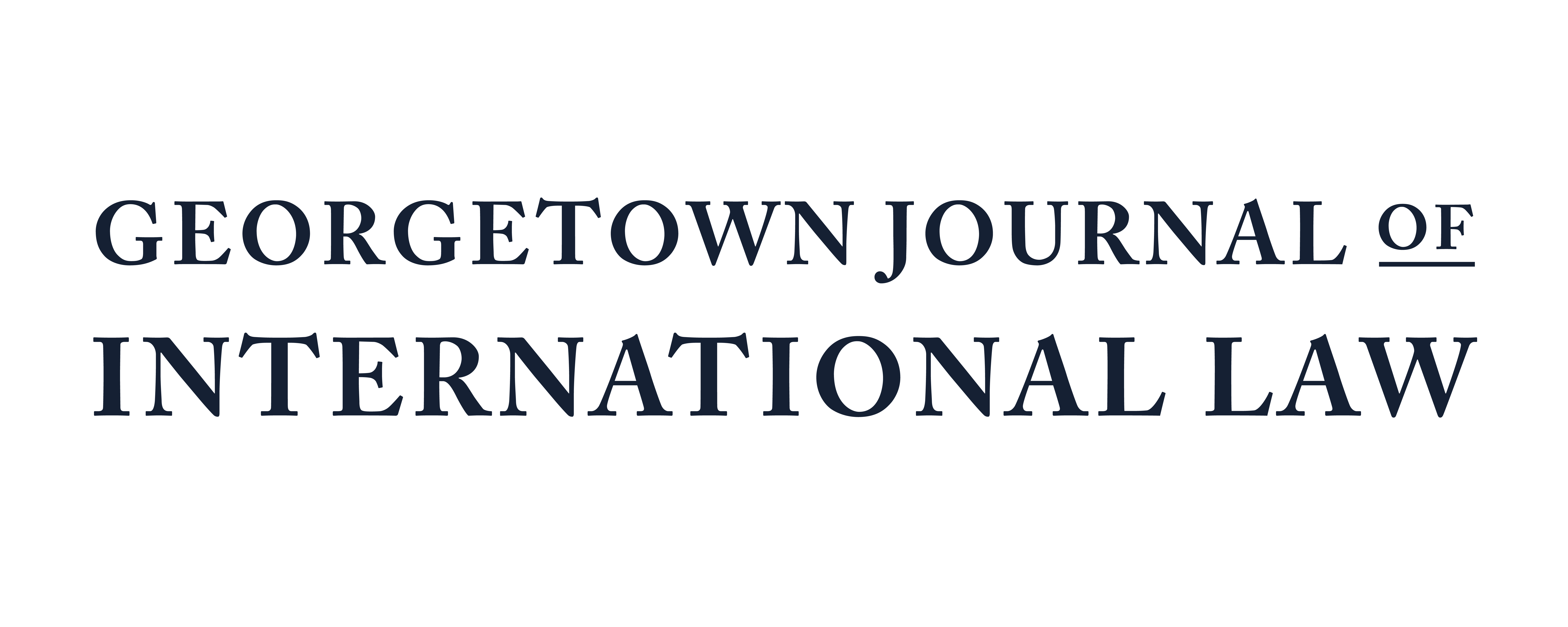Checking In: How Soft Law and Corporate Social Responsibility are Filling Governance Gaps to Combat Human Trafficking in the Global Travel and Tourism Industry
Although data is often underreported, the International Labour Organization (ILO) estimates approximately 25 million adults and children are bought and sold worldwide into human trafficking. Footnote #1 content: This Note adopts The Protocol to Prevent, Suppress and Punish Trafficking in Persons, Especially Women and Children (U.N. TIP Protocol) definition of human trafficking. See generally Protocol to Prevent, Suppress and Punish Trafficking in Persons, Especially Women and Children, Supplementing the United Nations Convention against Transnational Organized Crime, opened for signature Nov. 15, 2000, 2237 U.N.T.S. 319, (entered into force Dec. 25, 2003) https://treaties.un.org/doc/Publication/UNTS/Volume%202237/v2237.pdf [hereinafter U.N. TIP]. Footnote #2 content: Human Trafficking by the Numbers, HUMAN RIGHTS FIRST (Jan. 7, 2017), http://www. humanrightsfirst.org/resource/human-trafficking-numbers. Labor and sexual exploitation are among the most common forms of human trafficking, comprising 83% of cases worldwide. Footnote #3 content: Id. Women and girls are especially vulnerable to trafficking, accounting for 71% of victims worldwide. Footnote #4 content: Id.
Meanwhile, even though 187 countries ratified the U.N. Convention against Transnational Organized Crime, Footnote #5 content: Signatories to the United Nations Convention against Transnational Crime and its Protocols, U.N. OFFICE ON DRUGS & CRIME, https://www.unodc.org/unodc/en/treaties/CTOC/signatures.html (last visited Apr. 21, 2017). human trafficking data indicates that the business is thriving. Footnote #6 content: Robbie Couch, Human Trafficking Is Still Globe’s Fastest-Growing Crime Despite Increased Awareness, HUFF. POST (Jan. 7, 2015), http://www.huffingtonpost.com/2015/01/07/human- trafficking-increasing_n_6425864.html. Recent estimates suggest that human traffickers earn as much as $32 billion per year, Footnote #7 content: End Trafficking, UNICEF USA, https://www.unicefusa.org/sites/default/files/assets/pdf/ End-Child-Trafficking-One-Pager.pdf (last visited Apr. 21, 2017). which lands trafficking in the ranks of the sale of drugs and arms as one of the world’s most profitable illicit crimes. Footnote #8 content: Couch, supra note 6.
Moreover, traffickers are becoming increasingly savvy, adapting the latest social media and Internet technologies to cross national borders and evade law enforcement around the world.
Footnote #9 content: Tech-Savvy Sex Traffickers Stay Ahead of Authorities as Lure Teens Online, REUTERS (Nov. 15. 2015, 7:00 PM), http://www.reuters.com/article/women-conference-traffickers-idUSL8N1343ZL20151116 [hereinafter Savvy Traffickers].
The global travel and tourism industry,
Footnote #10 content: This Paper adopts the definition of the global travel and tourism industry used in The Code. See generally Organizational Structure, THE CODE, http://www.thecode.org/about/organizational-structure/ (last visited Apr. 21, 2017).
composed of tour operators, lodging and accommodation businesses, travel agencies, and travel distribution corporations, as well as airlines and other transportation operators, is a prime target and what Travel Weekly describes as an “unwitting accomplice” in human trafficking.
Footnote #11 content: Kate Rice, The War on Human Trafficking, TRAVEL WEEKLY (May 7, 2014), http://www.travelweekly.com/Travel-News/Travel-Agent-Issues/The-war-on-human-trafficking.
Hotels are used by traffickers as temporary lodging for sexual encounters; airlines carry victims to their next location; and tour operators supply travelers eager to partake in illicit ac-tivity.
Footnote #12 content: Id.
While some headway has been made to make these businesses more aware and accountable for this illicit activity, an array of barriers, including a lack of training on how to handle issues as well as gaps in international policy and national and subnational implementation, hampers efforts. Footnote #13 content: MICHELE SARKISIAN, CORNELL HOSP. REPORT, ADOPTING THE CODE: HUMAN TRAFFICKING AND THE HOSPITALITY INDUSTRY 8 (2015).
The global travel and tourism industry is a $7.6 trillion per year industry, Footnote #14 content: Global Travel and Tourism Industry – Statistics & Facts, STATISTA, https://www.statista.com/topics/962/global-tourism/ (last visited Apr. 21, 2017). and harnessing the power of the sprawling global tourism business is a key battleground for the fight against human trafficking. Footnote #15 content: Anna Williams Shavers, Human Trafficking, the Rule of Law, and Corporate Social Responsibility, 9 S.C. J. INT’L L. & BUS. 39, 83-84 (2012).
First, this Paper identifies gaps in human trafficking hard law at the international, national, and subnational levels to create corporate accountability for human trafficking. Second, this Paper analyzes how soft law, such as international policy guidelines, and corporate social responsibility (CSR) initiatives may help fill these gaps. Finally, this Paper suggests a path forward, outlining a multidisciplinary approach to combating trafficking in the global travel and tourism industry.
Subscribe to GJIL
